L'Atelier de Paris - Rue de Douai 65
Oil on panel 26.5 x 35 cm
Signed GM Rochegrosse lower left with the title and a dedication "A Petit Antoinette”
After 1920
Bibliography: Laurent Houssais, Georges-Antoine Rochegrosse – The splendor of decadence. Catalog of the exhibition at the Anne-de-Beaujeu museum, 2014.
David Wark Griffith, among the images collected for his film Intolerance, held a photograph of The Death of Babylon by Georges Rochegrosse. The gigantic works of the man who was one of the last great painters of history heralded the "peplums" and Hollywood films with great spectacle. Rochegrosse had made himself famous for his sensational historical paintings, carefully prepared by scholarly reading and archaeological documentation. Against a backdrop of scenery worthy of an opera, these "great machines" offered the public "blood, voluptuousness, death": apocalypse scenes illustrating the agony of depraved empires, ancient orgies, illustrious assassinations, abuses of a bloodthirsty populace, allegories of a humanity abandoning itself to its destructive madness... all set ablaze by the colors of blood and fire (one of his most dramatic works is moreover entitled La Joie red). Passionate about Wagner and close to symbolism, Georges Rochegrosse had nothing against the subjects of modern life, but he was one of those who found impressionism "low ceiling", banal in content. His stepfather (and probably his natural father) was the poet Théodore de Banville, who introduced him to literary circles. His affinities went to Salammbô by Flaubert, of which he made superb illustrations. After his glory, he of course experienced the reprobation doomed to all those who have been condemned to loathing under the name of "firefighters" - without admitting that they sometimes incarnated with talent other paths of painting than aesthetic research. of the vanguard. Since the 1970s, the Anne-de-Beaujeu museum in Moulins has been preparing its rediscovery, if not its rehabilitation, consecrated by a major monographic exhibition in 2014. Alongside his historical compositions, Georges Rochegrosse painted a few intimate scenes, such as the touching portrait of his wife Marie in their villa in Djenan Meryem, which he had built around 1900 on the heights of El Biar, near Algiers. Although the workshop represented in our pochade is Parisian, the artist had designed an Orientalist decor here, a warm patchwork of rugs and fabrics surrounding a Syrian table and a chest from North Africa. This puzzle of textiles with abstract patterns, all differentiated, itself borders on abstraction and gives the work an unexpected modernity. If he had established his residence in Algeria, where he died, Rochegrosse always kept a foothold in Paris. He often changed address and the catalogs of the Salons place him sometimes on boulevard Berthier, sometimes on avenue des Ternes or in Neuilly. After 1924, he declared no other address than his villa in El Biar. The initials GM which begin the signature of our painting indicate a date after 1920 (after Marie's death, Georges added an M in her memory). No doubt, during the 1920s, the painter rented a studio for some time at 65, rue de Douai. Located in the district of New Athens, it was a street of painters. Hippolyte Bellangé, Tony Robert-Fleury had workshops there and Edgar Degas resided there.










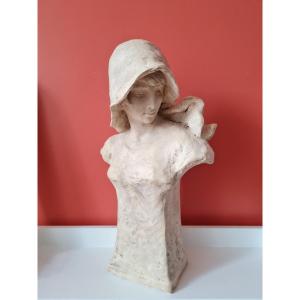








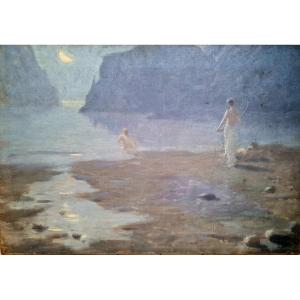
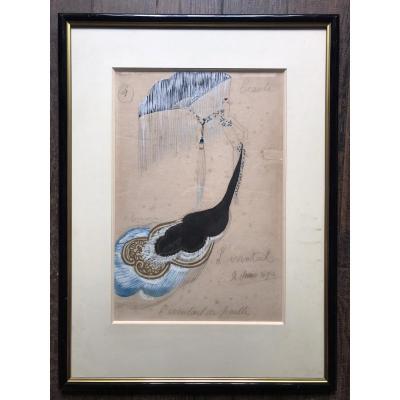
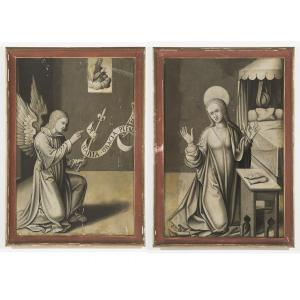





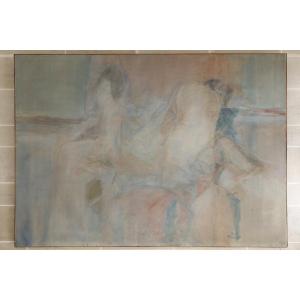



 Le Magazine de PROANTIC
Le Magazine de PROANTIC TRÉSORS Magazine
TRÉSORS Magazine Rivista Artiquariato
Rivista Artiquariato